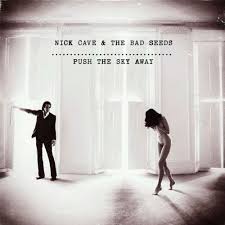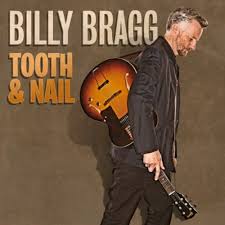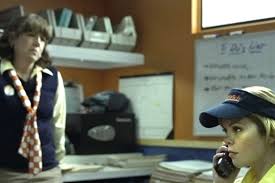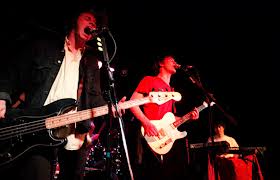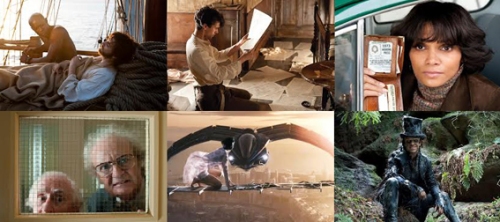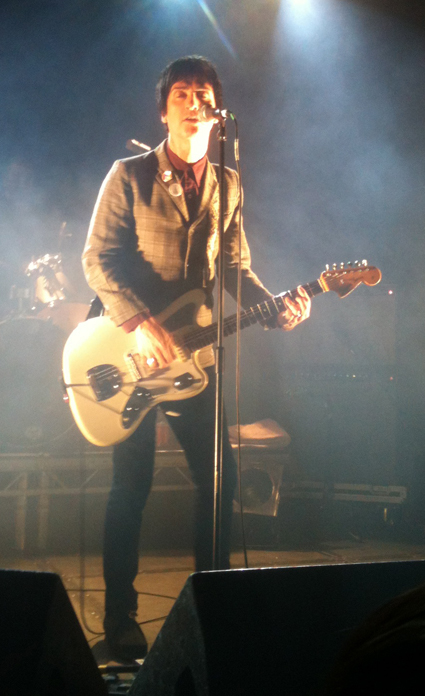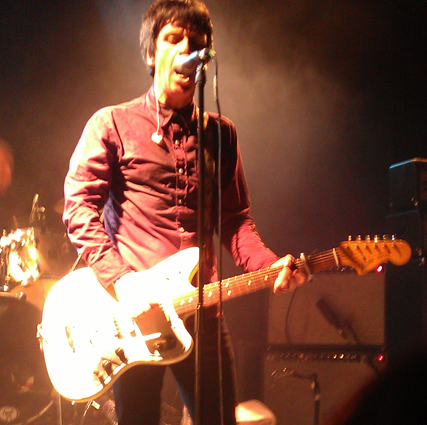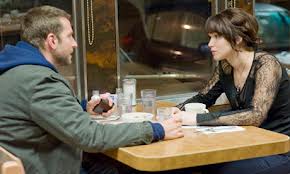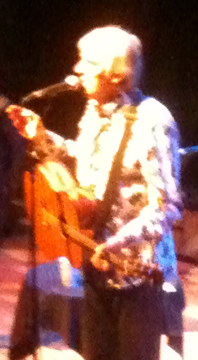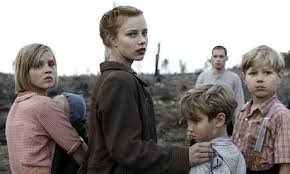Only three months in, and 2013 has already seen the release of a positive avalanche of albums by people I’ve been long interested in, as well as quite a few good ones by younger, and some might say fresher, bands. This is in stark contrast to last year, when none of the new records I heard made much of an impression on me (the big exception being the extraordinary Transcendental Youth by The Mountain Goats, which I played to death. But I’ve rambled on enough about them already). Time for a round-up on what various old codgers have been up to.
The biggest news is the sudden re-emergence after a decade of silence of David Bowie, who on his 66th birthday in January unexpectedly made available on the internet a brand new song, the wistful and haunting Where Are We Now? The accompanying album The Next Day followed a couple of months later, and showcases the erstwhile fragile and reclusive Dame in what appears to be rude health: it’s a robust and disciplined collection of fourteen energetic rock songs (that single turned out to be something of a red herring) that sound tailor-made to shake the foundations of your nearest 80,000 seater stadium (not that there’s any hint that he’s going to be touring, oh no). Given Bowie’s reputation for being a restless innovator the most surprising thing about the album is the unapologetic lack of experimentation and the fact it pays no lip service at all to any modern or technological musical trends – with its full-on guitar soloing and occasional saxophone fills it sounds like the fanbase-pleasing album he should have put out in 1983 instead of Let’s Dance. He gets away with it though, because these are pretty much all really good songs, urgent, catchy as hell, complex in places without being irritatingly arty and displaying a line in mordant lyric writing that provides a lot more to get your teeth into than the trite sloganeering of the average guitar-based megastar. And You Feel So Lonely You Could Die belongs on any Bowie best-of issued from here on.
Nick Cave on the other hand has maintained a workaholic rate of output for years, with the gaps between his “official” Bad Seeds albums filled with side projects, movie scripts, soundtracks and novels. His new one Push The Sky Away finds him in stripped-down reflective form, with a restrained contemplative mood running through all the songs, and no grotesque mad-preacher freak-outs to be found anywhere. This is the first Bad Seeds album not to feature founder member Mick Harvey and it shows – to fill the gap multi-instrumentalist Warren Ellis provides gentle but insistent loops and riffs with frequent washes of organ and violin in the background. Just because it’s quiet doesn’t mean that this is ignorable though: Cave’s vocal presence, lovely melodies and arresting imagery (which often seems drawn from his adopted home town of Brighton) make this as enchanting an album as his other low-key entry The Boatman’s Call, although the two records don’t really resemble each other much at all.
It’s taken twenty-five years from the break-up of The Smiths for genius guitarist and consummate sideman Johnny Marr to release his first solo album proper. Anyone who loved his former band will want to hear The Messenger as it’s full of the familiar elegant chiming guitar work that Marr sometimes seemed to actively want to suppress in the days when he was helping out The Pretenders or Electronic or The The and as an object lesson to upcoming indie bands as to how to record and layer riffs and textures it’s unimpeachable, but sadly what it doesn’t have particularly are strong tunes or much in the way of presence or character – in some ways these sound more like templates with guide vocals than actual songs. Marr obviously cares about his craft and has thought about his lyrics but sprinkling self-consciously dynamic words like “generate” or “velocity” around the song titles smacks a little of trying too hard. It’s by no means terrible, and some of the melodies do start to stick after a while, but you can’t help feeling that Marr really needs a charismatic frontperson to really make the most of his gifts.
Marr’s one-time songwriting partner Billy Bragg returns from his mission to re-ignite interest in his noble predecessor Woody Guthrie with Tooth & Nail, an album of personal rather than political songs recorded live in the studio with his new band. Bragg’s excitement about this project and the quick and spontaneous nature of its creation led me to expect something quite raw and rough but actually it turns out to be mellow, midpaced, delicate and definitely more country than rock, with comforting and familiar structures and devices much in evidence. So musically nothing special, but Bragg’s saving graces are his lovely, never compromised, Estuary singing voice and his deft way with a lyric, finding delightful rhymes and wry ways to undercut himself just as you think you’ve worked out where the song’s heading. I can even forgive him the bad grammar of No-one Knows Nothing Anymore for the sake of the pleasing alliteration.
Camper Van Beethoven are former alt-folk-indie-rockers from California who will be forever treasured (by me, anyway) on account of the immortal single Take The Skinheads Bowling and their supposedly farewell album Key Lime Pie, which came out in 1989. Since then they’ve regrouped as the slightly more mainstream Cracker, broken up again, and then reformed under their original name, releasing first a re-recording of the whole of Fleetwood Mac’s Tusk double album, then the epic, yet surprisingly tuneful, concept album New Roman Times which was something to do with martial law being imposed in the USA and one man’s efforts to resist it. This new album La Costa Perdida is a lot more relaxed and digestible, has some pleasing summer-y guitars and harmonies and will be the ideal soundtrack if the weather ever improves around here enough to think about having a barbecue.
Confrontational veteran art-rockers Pere Ubu have on the other hand never been relaxed or mellow, although they have dabbled in what experts might call “skewed pop”. It’s now thirty-five years since they unleashed the terrifying, but remorselessly thrilling The Modern Dance on the world, a record that sounds at first like a demented baby squealing over a random mash-up of construction noises and electronics malfunctioning but is actually positively groovy given a chance, and they’re still at it: the new one, The Lady From Shanghai, is in the main bracing, disciplined and not overtly cacophonous and even features their gnomic leader David Thomas crooning “you can go to hell” to the tune of Ring My Bell, but they’ve thoughtfully remembered to include six minutes of disjointed thuds, static and warbling at the end just to keep it real.
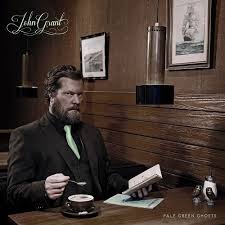
Former Czars frontman John Grant hasn’t been making records nearly as long as everyone else on this list but he still qualifies for inclusion as he’s (just about) older than me. Pale Green Ghosts is the follow-up to his heroically bile-filled 2010 solo debut The Queen Of Denmark, which successfully married some of the most self-loathing and wittily acidic lyrics I’ve ever heard to perfectly rendered and highly infectious Harry Nilsson style soft-rock backings. Frankly, it’s a masterpiece. The new one hasn’t moved on much subject-wise (character assassinations of ex-lovers feature prominently) but Grant’s made an effort to find new musical settings, with a lot of the tracks sounding not unlike stark, electronics-heavy 80s dance tracks, a bit like Prince’s Sign O The Times. Truth be told, I’m not much taken with this approach as it all gets a bit minor key and samey, and titles like You Don’t Love Me Anymore and It Doesn’t Matter To Him don’t really help to lighten the mood. This album does however contain one all-out classic in the jaunty and sarcastic GMF. The G stands for Greatest and the M for Mother and I’ll probably stop there.
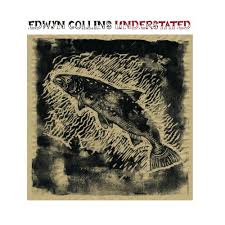 Finally, I just got hold of Edwyn Collins’s new one Understated, which may actually turn out to be the best thing I’ve heard so far this year – eleven lovingly well turned soul and pop songs, with a touching cover of Love’s Been Good To Me (as previously recorded by Johnny Cash and Frank Sinatra) at the end. These tracks are melodic, tight, punchy and completely disarming, thanks to Edwyn’s distinctive vocals and phrasing, and his positive, sincere but never cloying lyrics, that focus on his good fortune in still being alive and active after some horrific, life-threatening experiences. I can’t think of another songwriter who’d get away with using Forsooth and Understated as titles, but Edwyn makes it seem as natural as breathing. I’m going to see him next month, it could be an emotional night.
Finally, I just got hold of Edwyn Collins’s new one Understated, which may actually turn out to be the best thing I’ve heard so far this year – eleven lovingly well turned soul and pop songs, with a touching cover of Love’s Been Good To Me (as previously recorded by Johnny Cash and Frank Sinatra) at the end. These tracks are melodic, tight, punchy and completely disarming, thanks to Edwyn’s distinctive vocals and phrasing, and his positive, sincere but never cloying lyrics, that focus on his good fortune in still being alive and active after some horrific, life-threatening experiences. I can’t think of another songwriter who’d get away with using Forsooth and Understated as titles, but Edwyn makes it seem as natural as breathing. I’m going to see him next month, it could be an emotional night.


